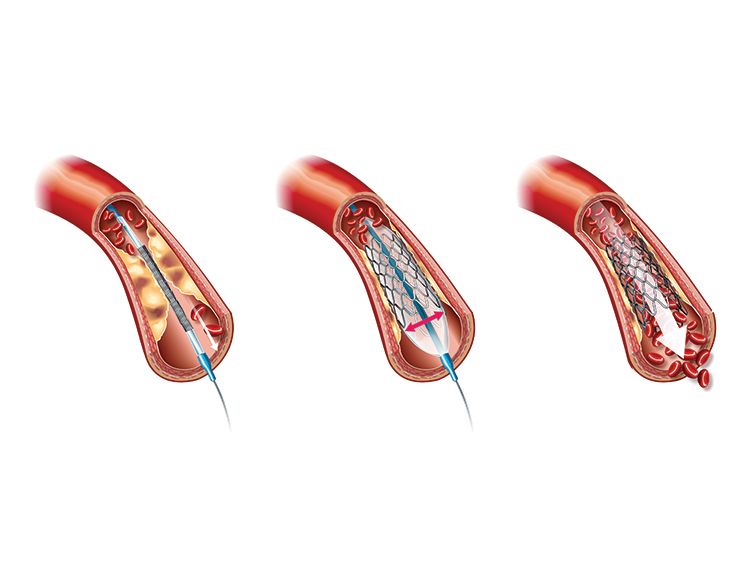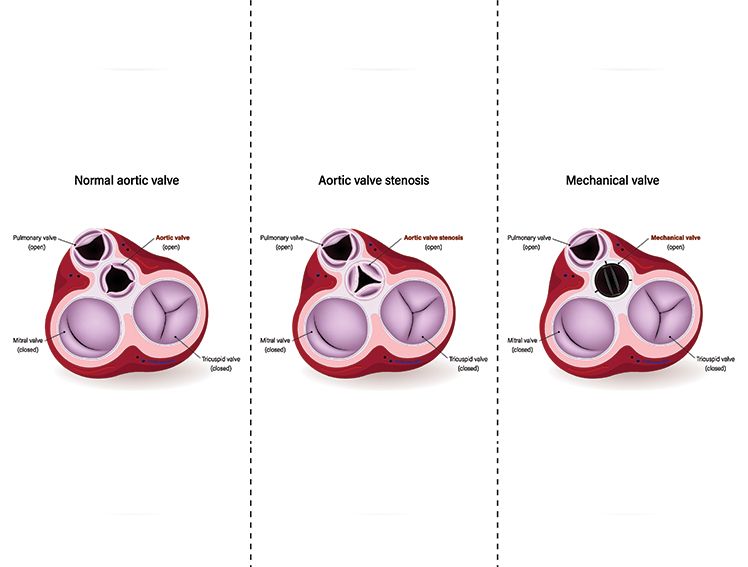
Managing Heart Health and Diabetes: Advances in Treating Coronary Artery Disease
Introduction
Heart health and diabetes are interconnected, with diabetic patients facing a higher risk of coronary artery disease (CAD)[1]. Advances in medical technology continue to transform treatment options like metal-less PCI, offering renewed hope for better management of CAD. This article explores the advancements in heart care, focusing on the latest innovations in CAD treatment that offer safer and more effective solutions for patients, particularly those with diabetes.
What is CAD?
Coronary artery disease (CAD) occurs when the coronary arteries, which supply blood to the heart, become narrowed or blocked due to the buildup of fatty deposits called plaque.[2] This condition can lead to severe complications, including heart attacks and strokes. Given the rising prevalence of CAD, especially among diabetic patients, newer advancements in treatments like metal-less PCI may hold promise.
Overview of Angioplasty and Its Evolution
Angioplasty has evolved significantly over the years to improve outcomes for patients with CAD.
Balloon Angioplasty: Initially, the treatment involved balloon angioplasty, where a small balloon is inflated inside the blocked artery to widen it. However, this method had limitations, such as the artery often recoiling back to its narrowed state.
Bare Metal Stents: To address these issues, bare metal stents (BMS) were introduced. These small, mesh-like tubes were implanted in the artery to keep it open. While BMS improved the success rates of angioplasty, they, too, had drawbacks, including the risk of restenosis, where the artery narrows again over time.
Drug-Eluting Stents (DES): The introduction of metallic drug-eluting stents marked a significant advancement. These stents release medication that helps prevent restenosis, thus improving long-term outcomes.
Challenges with Permanent Metallic Implants
Permanent metallic implants, despite their benefits, come with certain challenges:
Future Interventions: The presence of a metallic stent can complicate future procedures such as repeat angioplasty or bypass surgery.
Risks Associated with Permanent Implants[3]: Permanent implants can lead to late or very late adverse events, as they are foreign bodies which are logged in the coronary arteries.
What is Metal-Less PCI?
Recent advancements in PCI have led to the development of metal-less PCI, offering significant benefits, to CAD patients, this seem to be promising alternative in patients with comorbidity with diabetes.
Bioresorbable Scaffolds (BRS)
Bioresorbable scaffolds are a groundbreaking innovation in PCI. Unlike traditional stents, BRS are designed to gradually dissolve after fulfilling their purpose of keeping the artery open.[3]
No Permanent Implant: BRS leave no permanent implant, thus reducing the risk of long-term adverse events.
Natural Artery State: These scaffolds help maintain the natural state and movement of the artery, allowing for more natural healing.
Reduced Risk of Long-Term Events: Without a permanent implant, the risk of long term adverse events can be reduced.
Technology Behind Bioresorbable Scaffolds (BRS)
Bioresorbable scaffolds are a remarkable leap forward in angioplasty technology.[4]
Composition: BRS are made from bioresorbable polymers like PLLA (Poly-L-lactic acid).
Absorption Process: Over time, these scaffolds are absorbed by the body through hydrolysis, breaking down into lactic acid, which is then metabolized into carbon dioxide and water.
Temporary Support: BRS provide temporary support to the artery, preventing recoil and restenosis during the critical healing period, after which they gradually dissolve.
Drug-Coated Balloons (DCBs)
Drug-coated balloons are another significant advancement in the field of PCI.
Mechanism of DCBs[5]: These balloons are coated with anti-inflammatory and anti-proliferative drugs. When the balloon is inflated, it delivers the drug to the artery wall without leaving any implant behind.
Preserving Artery's Natural Shape[6]: The use of DCBs preserves the artery's natural shape and functionality, making future treatments easier.
Facilitating Future Treatments: Since there is no permanent implant, future interventions, if needed, are less complicated.
Technology Behind Drug-Coated Balloons (DCBs)
Drug-coated balloons represent a sophisticated technology aimed at improving angioplasty outcomes.[5]
Balloon Dilation Catheter: A DCB consists of a balloon dilation catheter coated with therapeutic drugs.
Drug Release: When the balloon is inflated, it releases anti-inflammatory and anti-proliferative drugs directly into the artery wall.
No Residual Implant: Unlike traditional stents, DCBs leave no residual implant, allowing the artery to retain its natural shape and function.
Ease of Future Treatments: The absence of a permanent implant simplifies future treatments if required.
Ideal Candidates for Metal-Less PCI
Coronary artery disease is a progressive condition that may require future interventions, either for new blockages or previously treated lesions. For young patients with diabetes, where delayed healing can complicate outcomes, avoiding permanent metal implants is a better alternative. Metal-less PCI provides a solution by eliminating the need for permanent stents, which could irritate the arteries over time. This approach is especially ideal for managing less complex heart blockages, as it preserves the natural flexibility of the arteries and allows them to remain ‘uncaged,’ promoting healthier long-term outcomes in young heart patients with diabetes.
Meres100 by Meril
Meres100 by Meril is a cutting-edge bioresorbable stent designed for treating coronary artery disease (CAD). It combines the benefits of effective arterial support with the gradual release of medication to prevent restenosis. Meres100 is CE-marked, ensuring its adherence to high standards of safety and efficacy.
Mozec SEB by Meril
Mozec SEB by Meril is a cutting-edge solution designed to enhance the effectiveness of angioplasty procedures. This Sirolimus Eluting Balloon (SEB) integrates the therapeutic benefits of sirolimus with the mechanical advantages of a traditional angioplasty balloon. Mozec SEB is CE-marked, ensuring it meets stringent European health, safety, and environmental protection standards.
Conclusion
The rapid adoption of metal-less angioplasty for coronary artery disease (CAD) holds significant promise for millions of heart patients, particularly those with diabetes undergoing angioplasty. This approach, designed to leave no permanent implant behind, minimizes the metal load within the arteries, thereby potentially reducing long-term complications associated with metal implants. By allowing the artery to regain its natural state, metal-less PCI not only supports healthier healing but also preserves the flexibility for any future interventions, offering a safer, and more adaptable solution for diabetic patients.
If you or someone you know is considering angioplasty, it’s worth exploring the option of metal-less angioplasty. Your doctor can guide you in making the best decision for your heart health.
References
[1] https://cvrti.utah.edu/understanding-the-link-between-diabetes-and-coronary-artery-disease/#:~:text=Diabetes%20is%20a%20chronic%20condition%20that%20affects%20millions%20of%20people%20worldwide%2C%20and%20it%20has%20long%20been%20associated%20with%20an%20increased%20risk%20of%20cardiovascular%20diseases%2C%20particularly%20coronary%20artery%20disease%20(CAD)
[2]https://my.clevelandclinic.org/health/diseases/16898-coronary-artery-disease
[3] https://www.ncbi.nlm.nih.gov/pmc/articles/PMC7969567/
[4] https://www.ncbi.nlm.nih.gov/pmc/articles/PMC7202443/
[5] https://www.ncbi.nlm.nih.gov/pmc/articles/PMC5253407/
[6] https://link.springer.com/article/10.1007/s11886-024-02077-8



